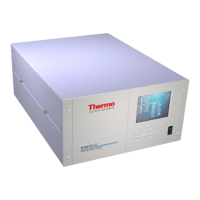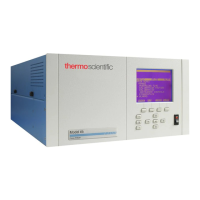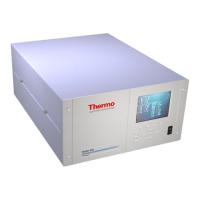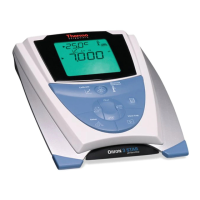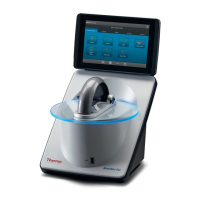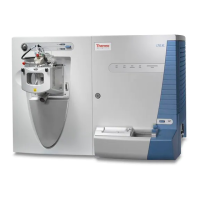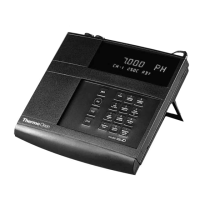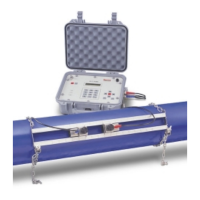
Do you have a question about the Thermo DCT7088 and is the answer not in the manual?
| Brand | Thermo |
|---|---|
| Model | DCT7088 |
| Category | Measuring Instruments |
| Language | English |
Identifies the DCT7088 Portable Digital Correlation Transit Time Ultrasonic Flowmeter User Manual.
Highlights critical safety warnings and operational guidance for the flowmeter.
Contains disclaimers on accuracy, proprietary rights, and acknowledgments.
Describes the DCT7088's capabilities as a non-invasive ultrasonic flowmeter.
Explains the transit time ultrasonic measurement principle used by the device.
Discusses factors affecting measurement accuracy, such as pipe conditions and flow profile.
Details the model number structure and available options for purchasing the flowmeter.
Lists key performance, functional, and physical parameters of the DCT7088.
Details flow range, accuracy, sensitivity, linearity, pipe size, and fluid compatibility.
Covers outputs, power, keypad, display, data logger, programming, and temperature limits.
Describes the physical attributes including transmitter, transducers, and weight.
Identifies and describes the purpose of each external port and control on the flowmeter.
Details the components and interface connections of the breakout box accessory.
Explains how to configure the 4-20 mA current loop module for self-powered or loop-powered operation.
Details jumper settings and wiring options for the current loop module.
Describes the flowmeter's keypad layout and LCD display features.
Identifies the keys and LCD elements for interacting with the flowmeter.
Instructions for adjusting display contrast and backlight for readability.
Explains how to navigate menus using their 2-digit addresses.
Describes menu navigation using the arrow keys for scrolling and selection.
Guides users on entering configuration data via setup menus.
Outlines the essential steps for initial flowmeter configuration.
Describes the various view-only primary displays for flow rate and totalizers.
Details additional setup menus for pipe parameters like OD, thickness, and sound speed.
Details additional setup menus for liner parameters like material, thickness, and sound speed.
Details additional setup menus for fluid parameters like type, sound speed, and viscosity.
Details setup menus for flow range, damping, and cutoff values.
Details setup menus for totalizer units, multipliers, and reset functions.
Covers menus for measurement units, site parameters, RS232, and passwords.
Details calibration procedures including zero set and scale factor adjustments.
Explains methods for zero flow set and manual zero set calibration.
Guides on setting the scale factor to compensate for transducer variations.
Covers sound speed compensation and date/time settings.
Details the setup and calibration procedures for the 4-20 mA current loop output.
Covers programming and viewing alarm conditions based on flow rate or signal strength.
Instructions for setting up flow rate or signal strength based alarms.
How to check the ON/OFF status of programmed alarms.
Details the setup for continuous data logging and file management.
Provides view-only menus for diagnostic parameters and signal quality.
Guides on configuring the optional thermal printer for log setup and settings.
Describes the terminal and cable connections for upstream and downstream transducers.
Provides guidelines for selecting optimal installation sites on the pipe.
Details procedures for determining transducer spacing and mounting methods.
Explains different transducer mounting techniques like V, W, Z, WV, and WW.
Describes the standard V mounting method for pipes 4-16 inches.
Explains the W mounting method for small metallic pipes (<= 4 inches).
Details the Z method for applications with signal attenuation or large pipes.
Outlines WV and WW methods for small pipe applications requiring higher accuracy.
Covers specific considerations and techniques for installing on small diameter pipes.
Provides override passwords for forgotten system or scale factor passwords.
Details the procedure for erasing all user data and logger data on the flowmeter.
Instructions for replacing the flowmeter and breakout box fuses.
Steps to replace the fuse located on the flowmeter's front panel.
Steps to replace the fuse in the breakout box.
Procedures and cautions for charging the optional thermal printer battery.
Explains how to power and charge the flowmeter's internal battery.
Guides on reapplying sonic coupling compound for optimal transducer performance.
Provides general troubleshooting steps and contact information for support.
Lists initial steps to resolve unsatisfactory unit performance.
Information on contacting local representatives for assistance.
Details information needed for service and procedures for returning instruments.
How to inquire about and obtain software upgrades for the flowmeter.
Outlines the product warranty terms and conditions provided by Thermo.
Provides standard dimensions for steel, stainless steel, and PVC pipes.
Tables of sound speeds and viscosities for various liquids.
Data on sound speed in clean water across a range of temperatures.
Graph relating specific gravity, viscosity, and sound velocity for petroleum products.
Instructions for installing the D-Link PC interface software.
Guides on connecting the PC to the flowmeter using RS232 and D-Link settings.
Explains how to retrieve and display logged data from the flowmeter on a PC.
Procedures for saving, loading, and exporting log files for data analysis.
